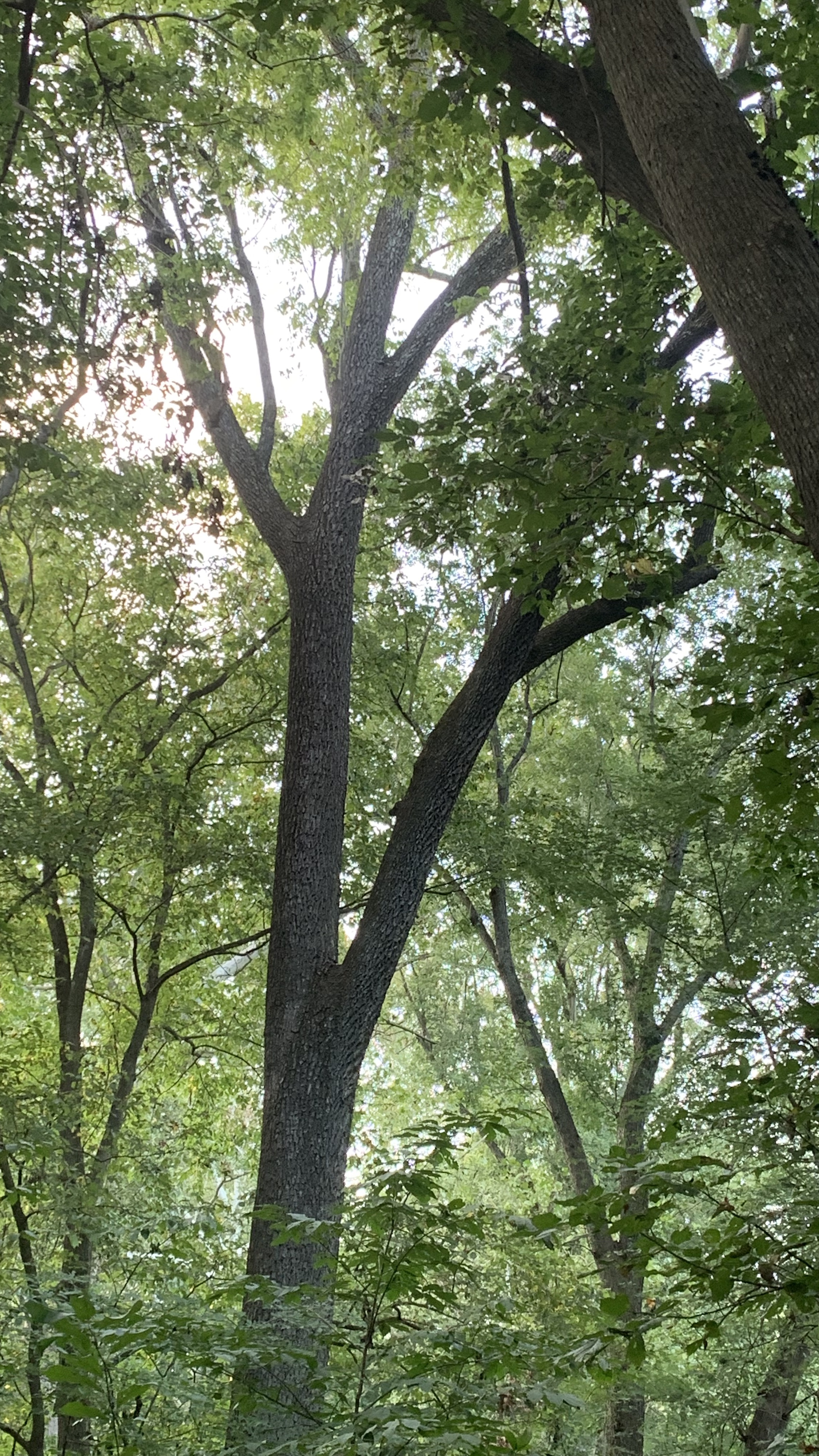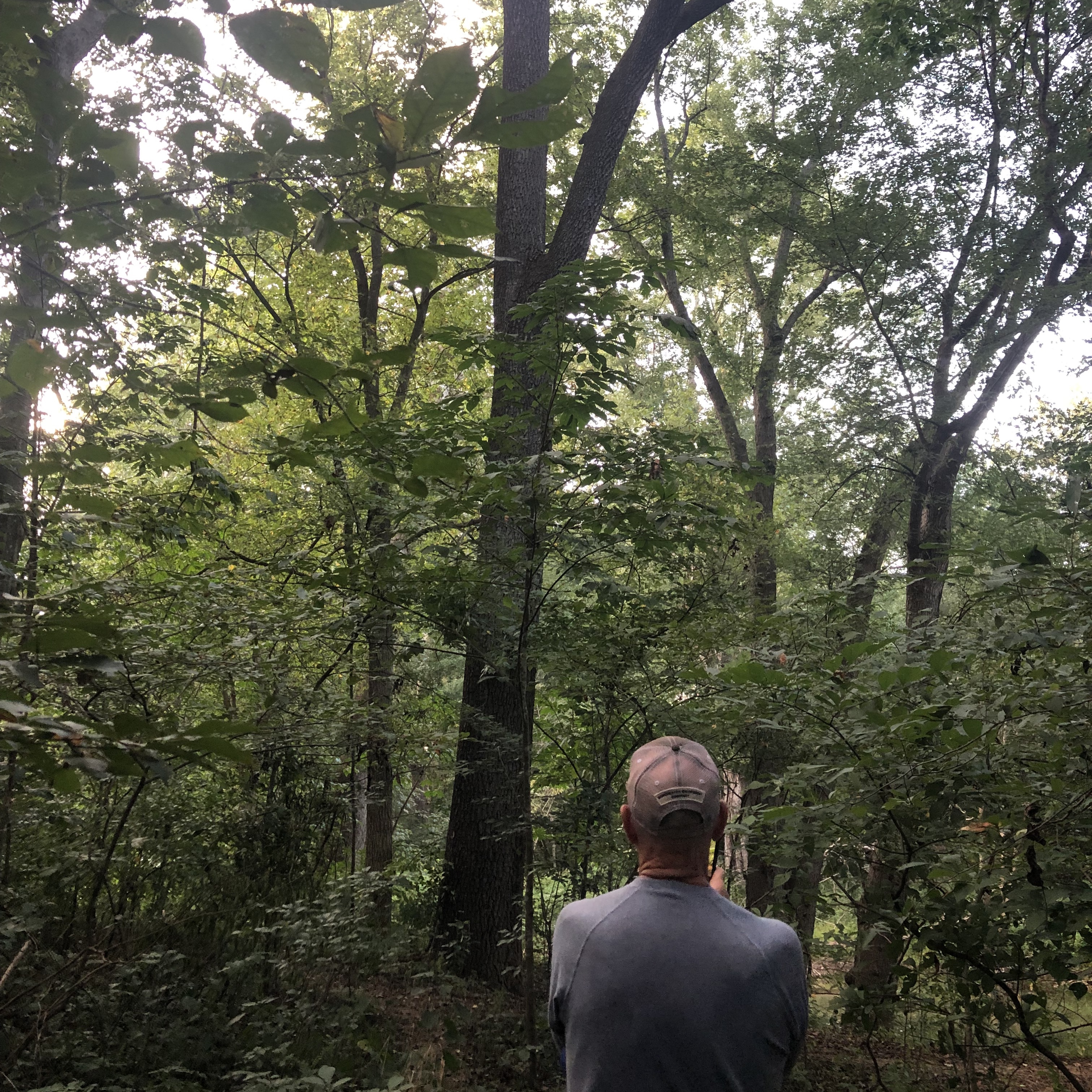Ever see a black walnut tree or nut in the forest? Black walnuts make a delicious desert cake. The wood is frequently used for furniture or floors. Black walnut trees are common in the Eastern United States. They are abundant in the Great Falls area, along the Appalachian Trail, or in the Shenandoah, In the fall, the nuts are all over the ground. This makes them easy to find.
Spreading Canopy
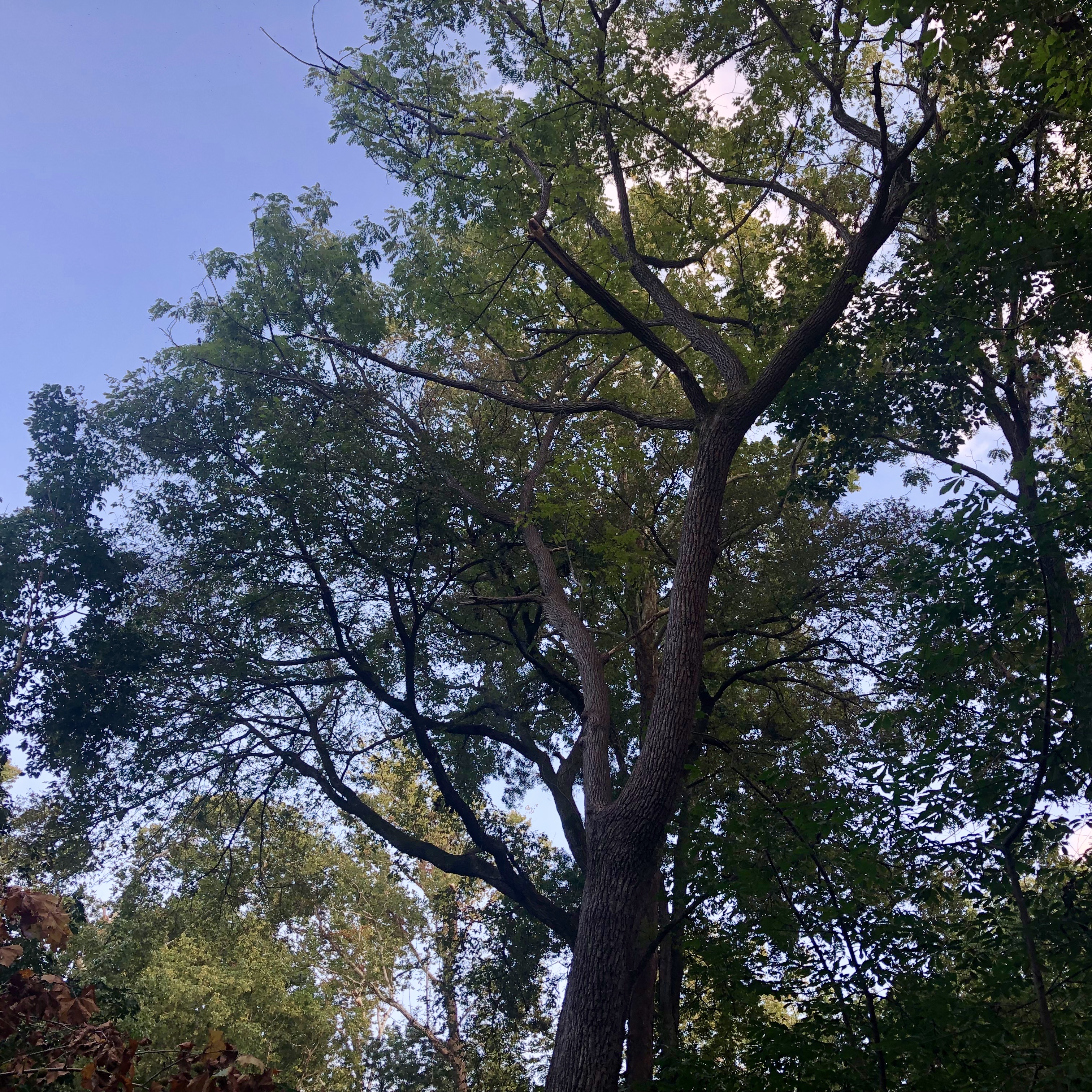
Tree Canopy Characteristics
In the woods, black walnut trees grow to heights of up to 150’. As the trees age, the trunks self-prune the lower branches. Straight long trunks are characteristic, and as a result, they are great wood for milling of furniture and floors. When grown in the open, the trunk is less dominant, therefore the spreading canopy is the main feature. It is a wonderful shade tree or aesthetic addition to any landscape. Canopies of trees in the forest are smaller and tighter.
Tight canopy
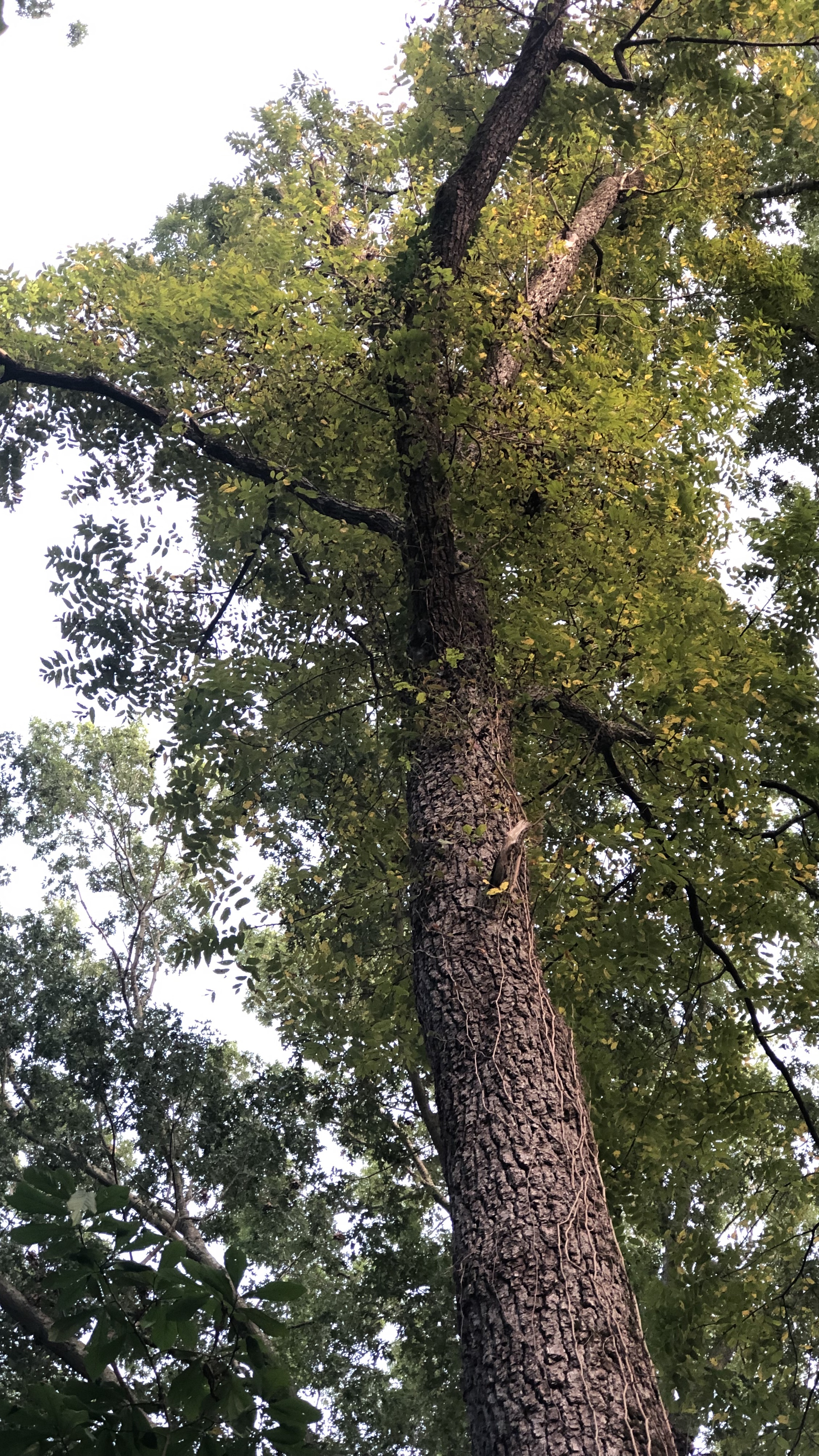
Black Walnut Wood
Black walnut wood is rated at 1010lbf on the Janka Hardness rating scale. The bark is deeply furrowed and on older trees is usually the characteristic walnut brown color. Heartwood is a range of colors from pale brown to the dark brown walnut color that we all associate with walnut wood. Wood grain is usually straight, but it can also curl (waves).
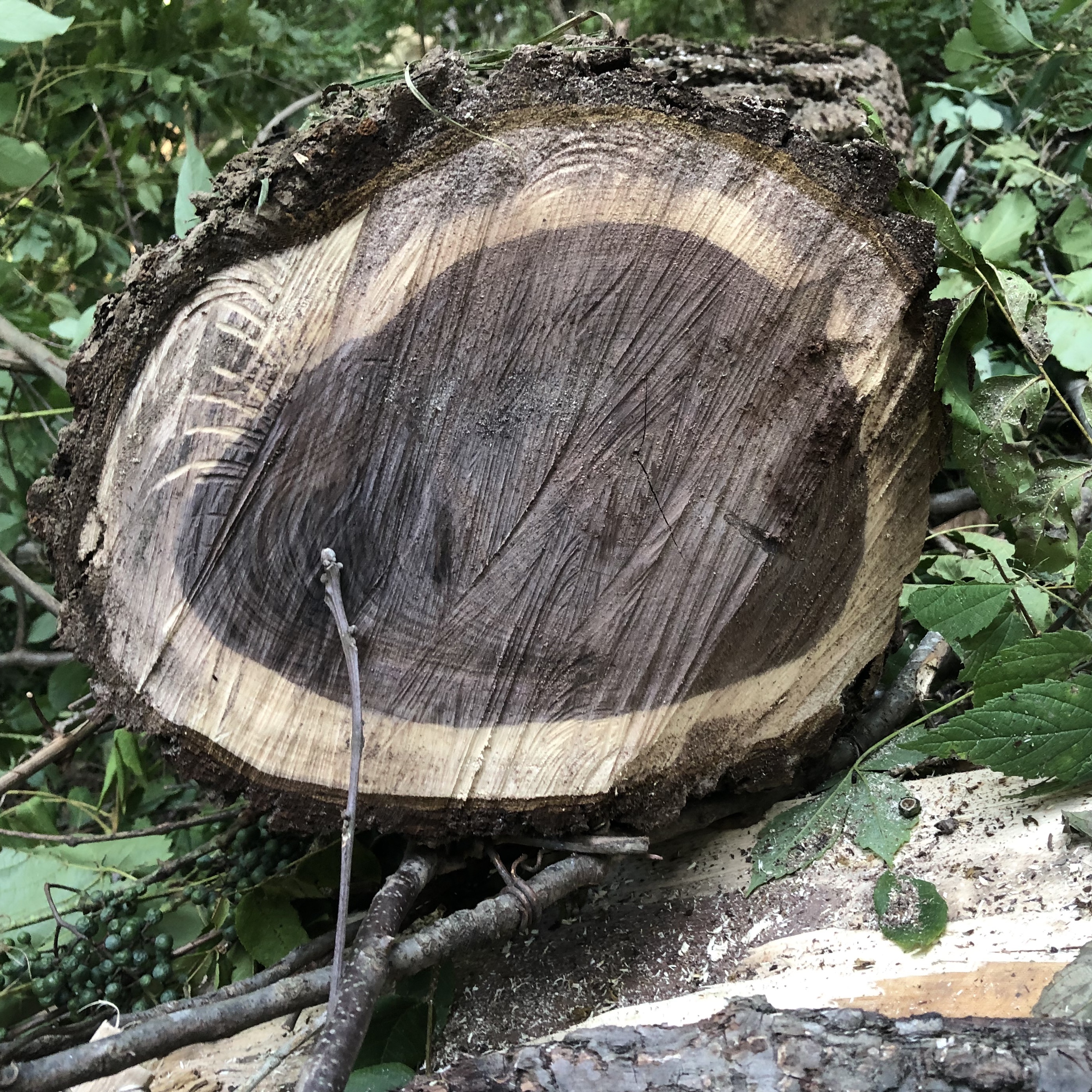
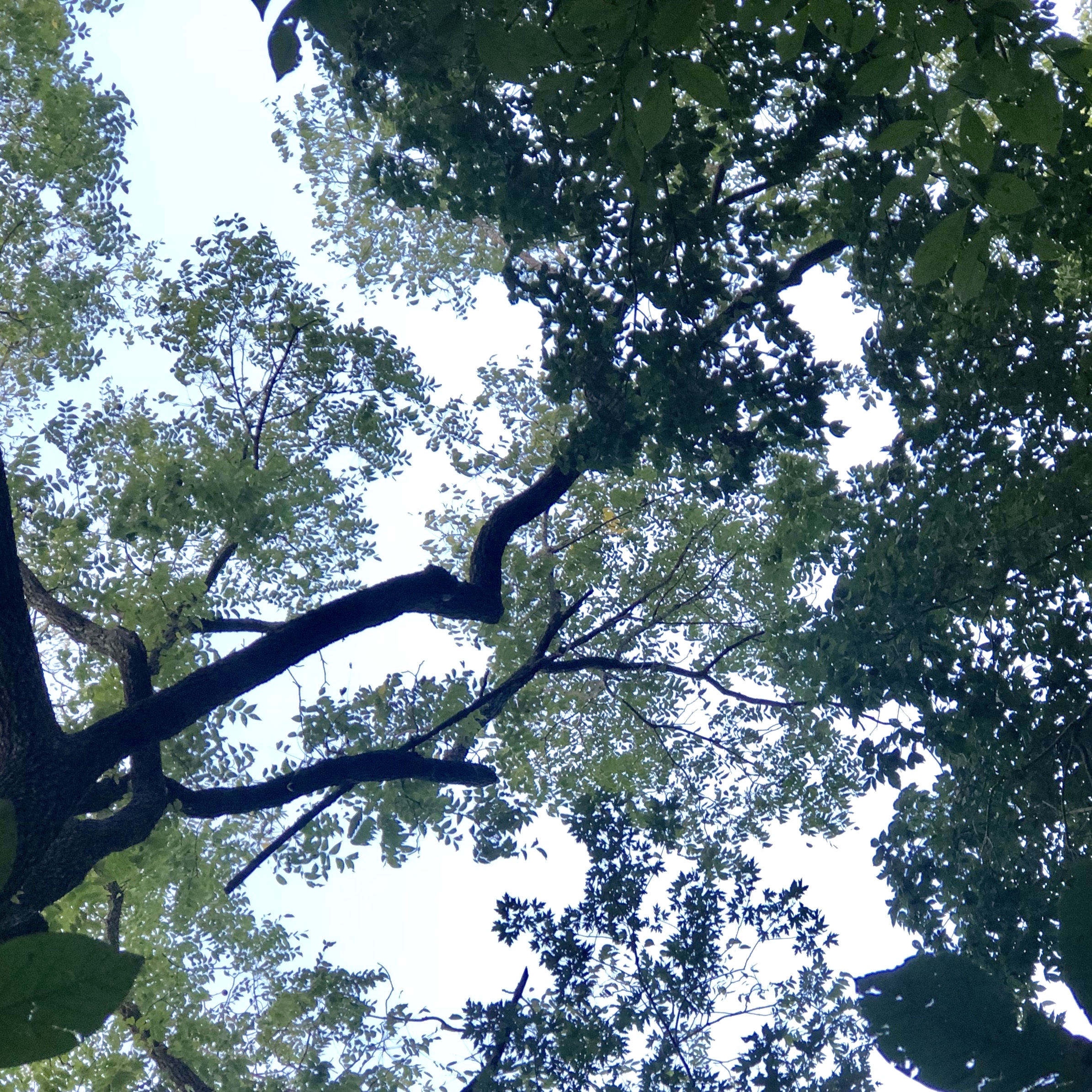
Leaves & Nuts
Leaves are alternate on the stem, and the terminal leaf is missing. That means that there is no leave at the end of the stem. Edges are slightly toothed and leaves are oblong with a moderate point at the end. Walnuts are approximately 2” in diameter and bright green. Nuts are edible and therefore provide food for lots of wildlife. They are true nuts, and not drupes.
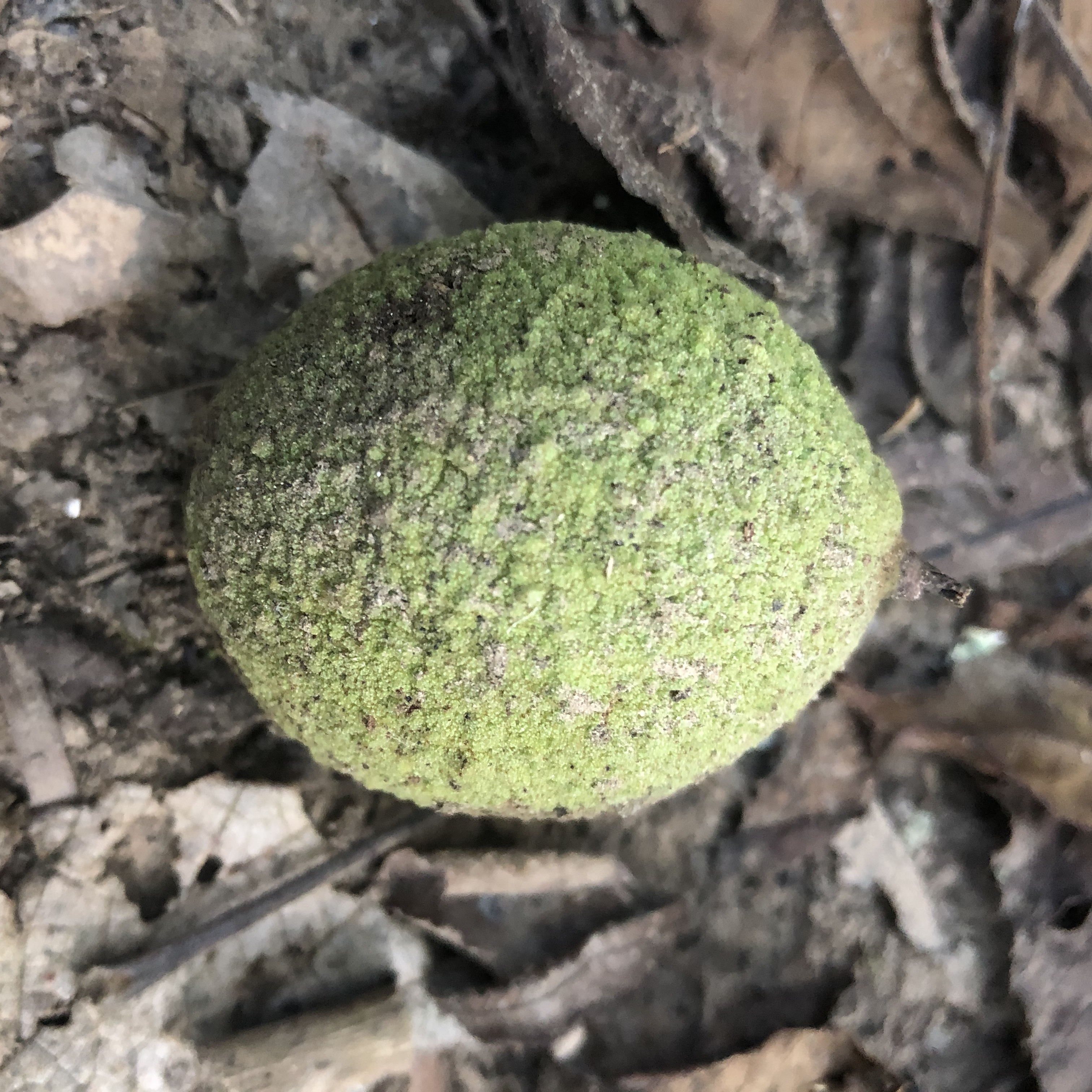
Roots and Interesting Fact
Juglone is a chemical produced by the walnut tree that is toxic to some other plants and foliage. It naturally occurs in the entire tree, and it is concentrated in the nut hulls and roots. As a result, the ground under the canopy may contain large concentrations of juglone. It is difficult for some plants to live in soil with juglone.
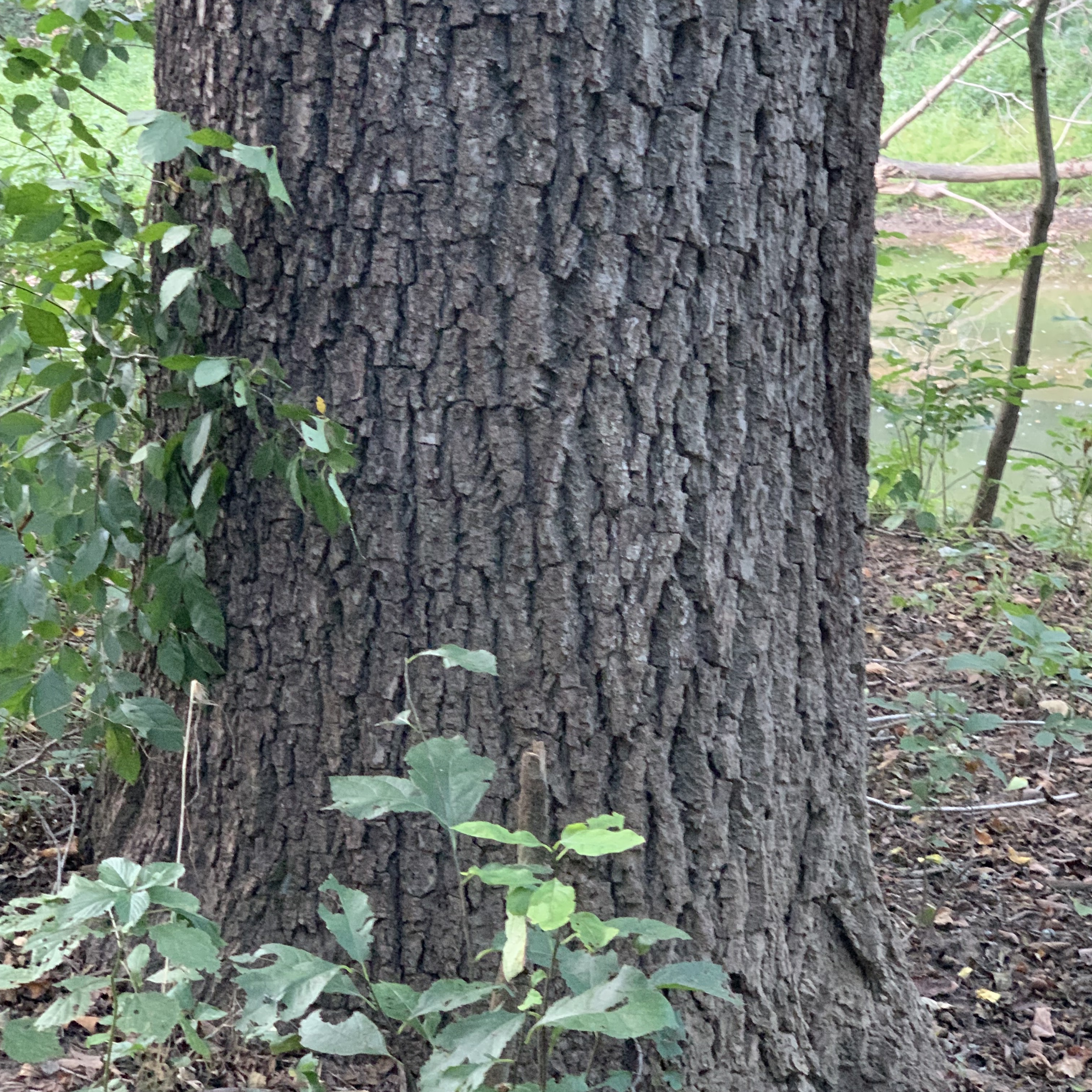
Takeaway
In conclusion, Black Walnut trees are a great addition to the forest. The wood is used for many products, and the nuts feed the wildlife.
References
